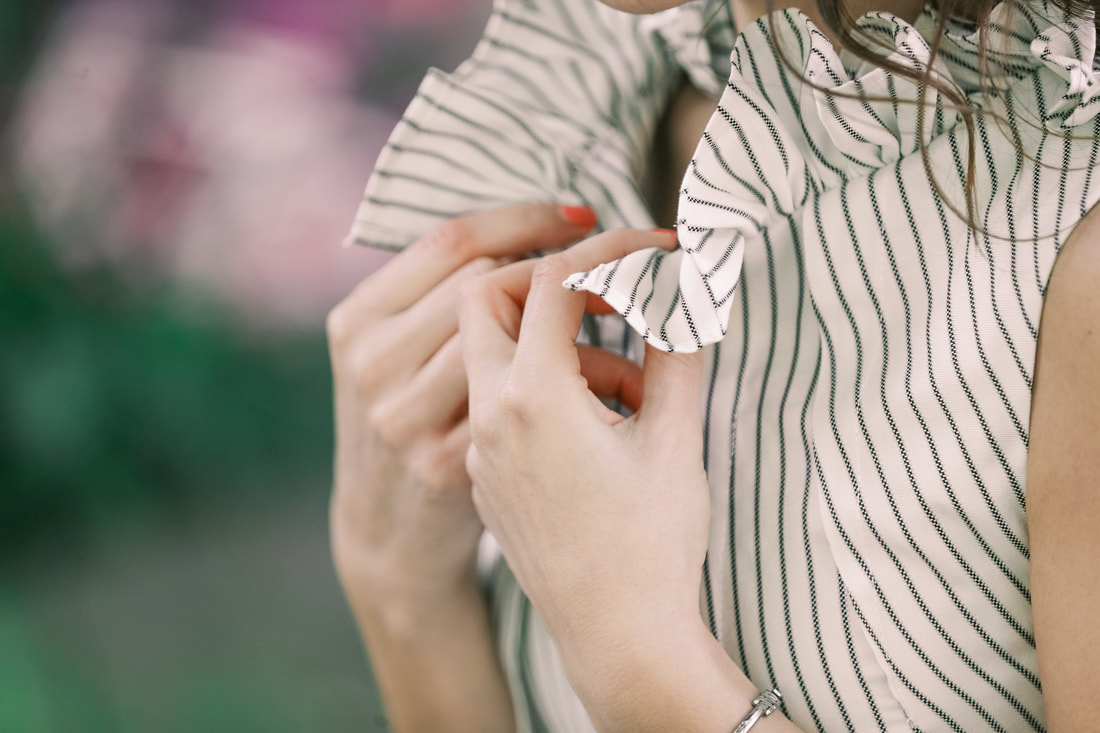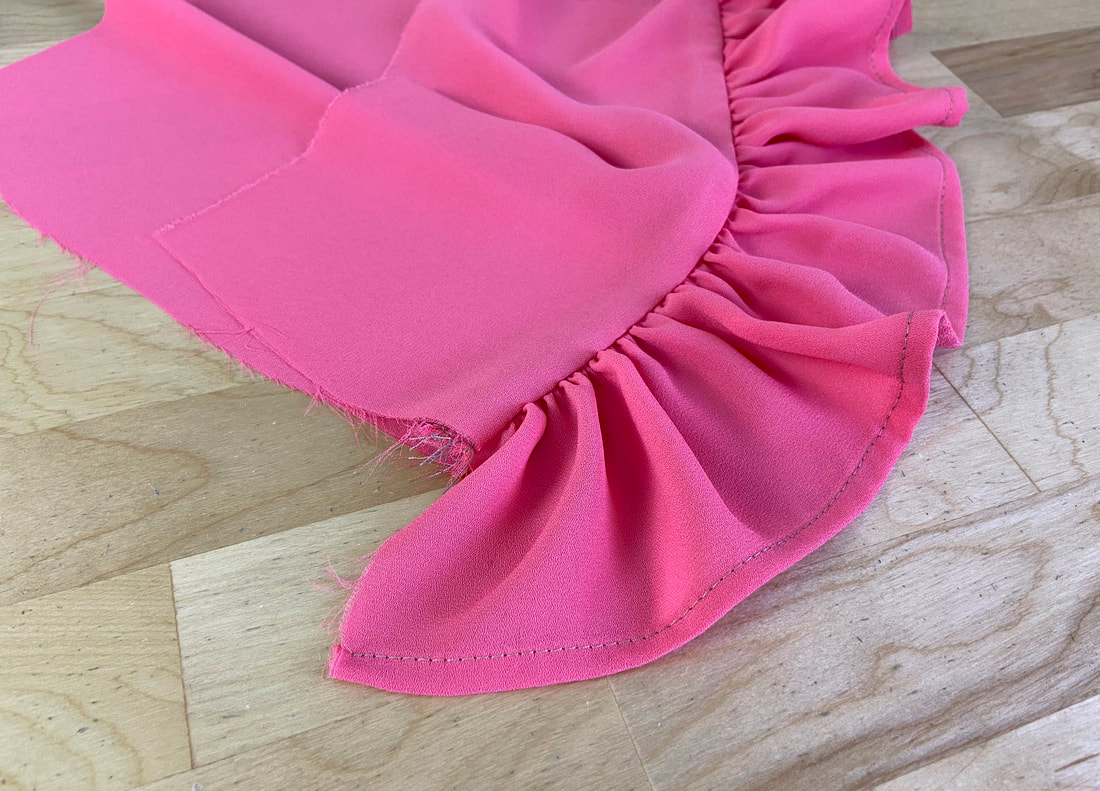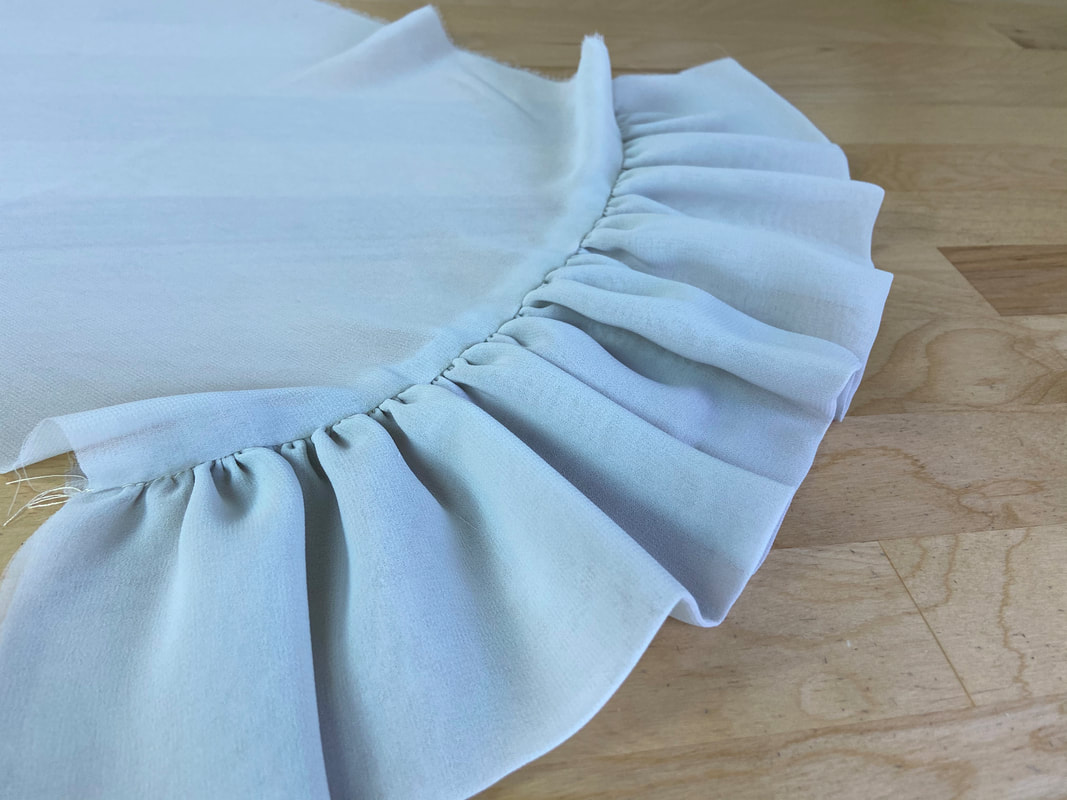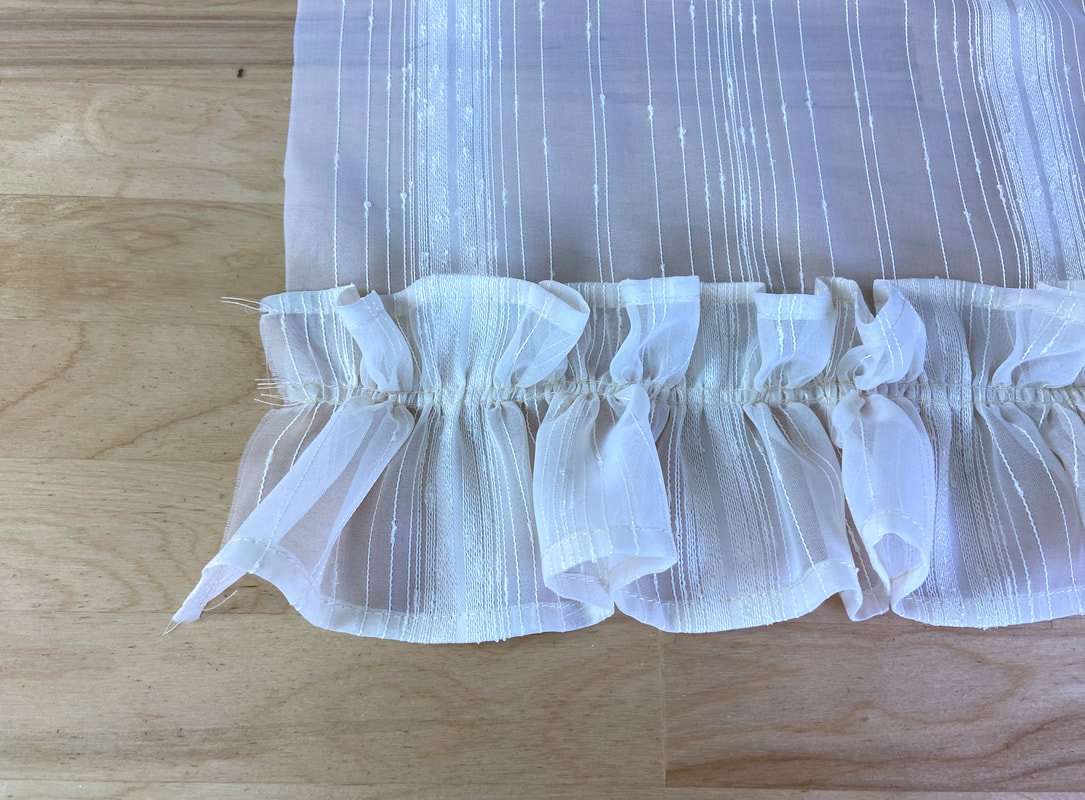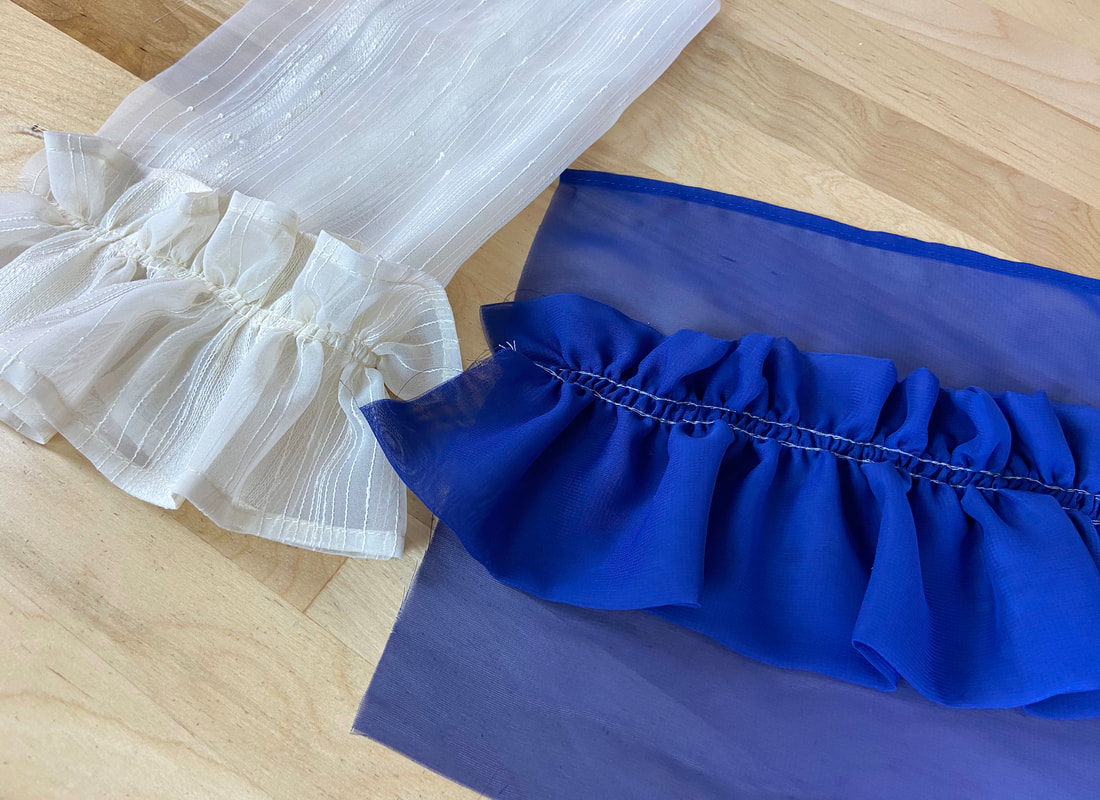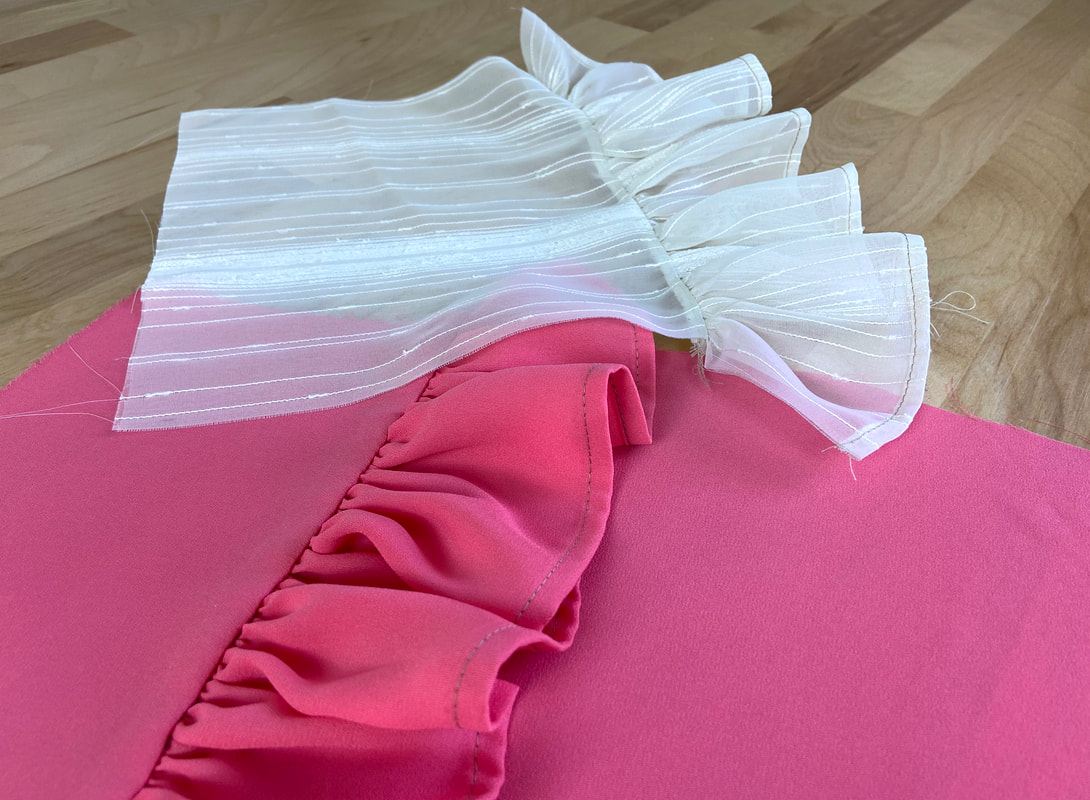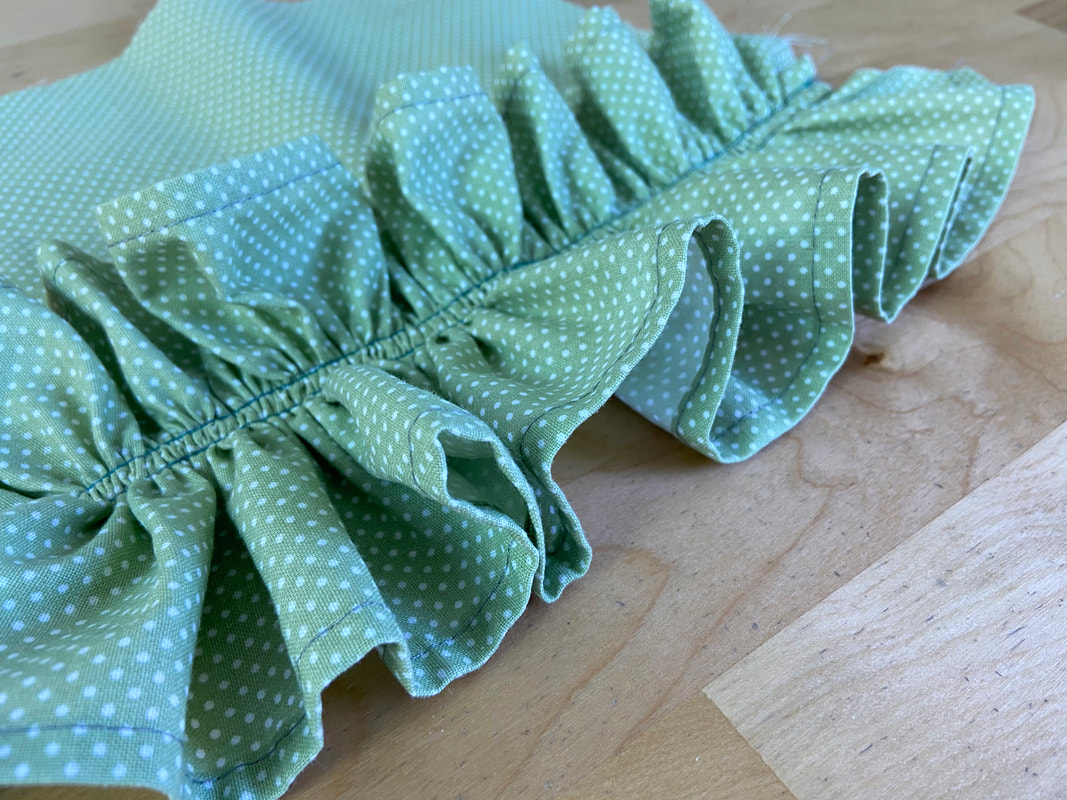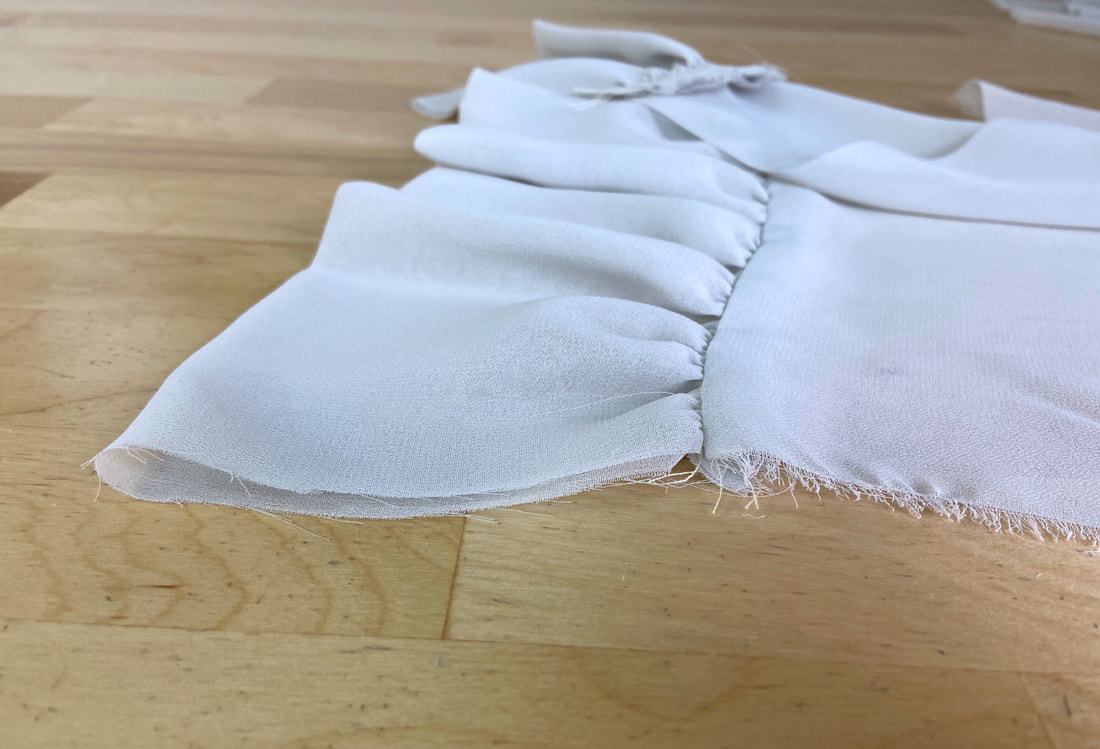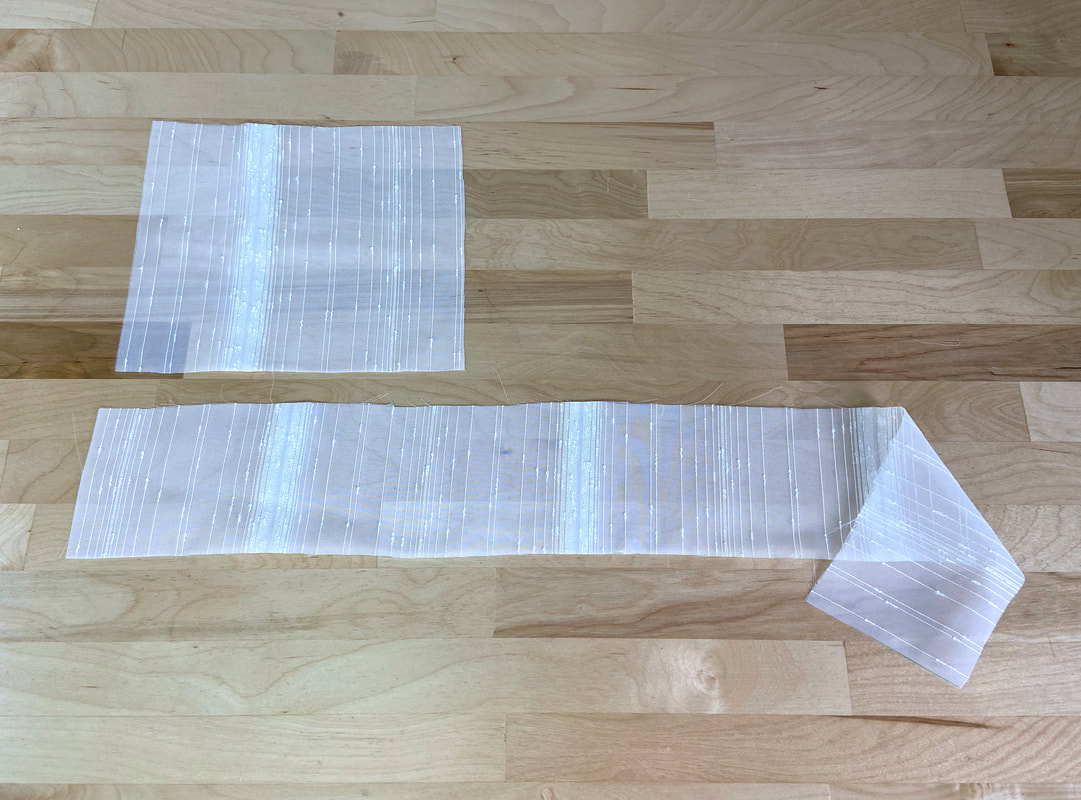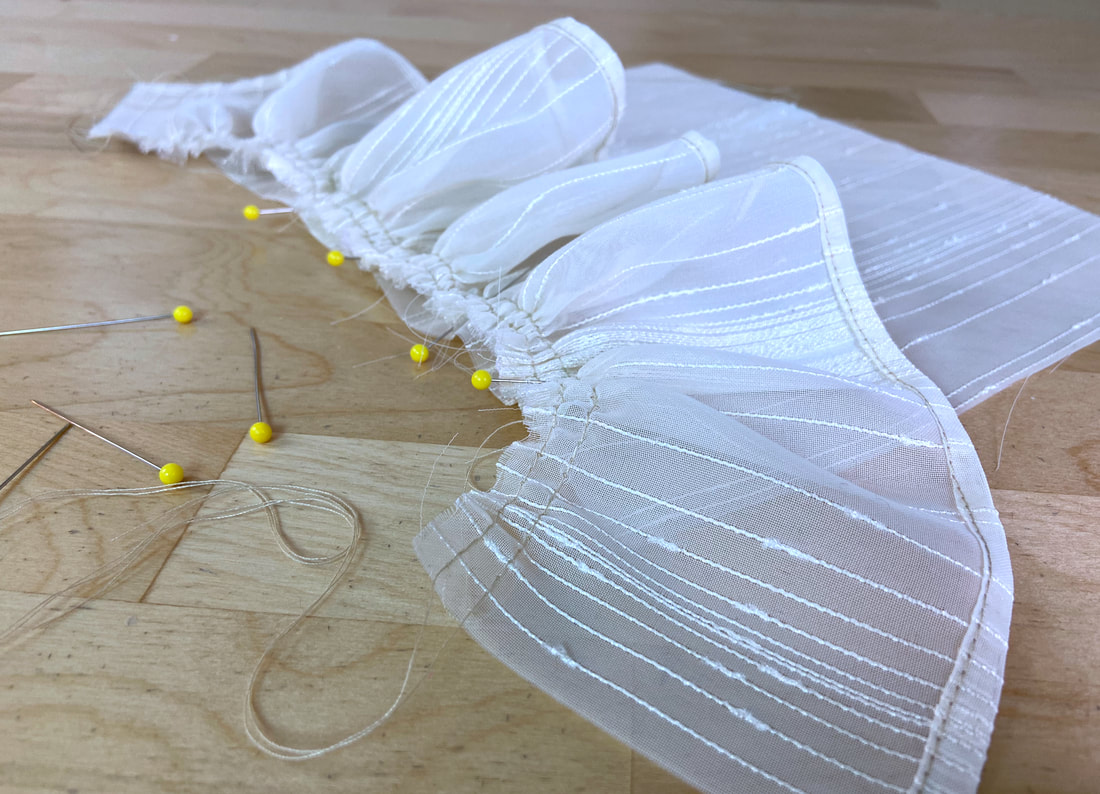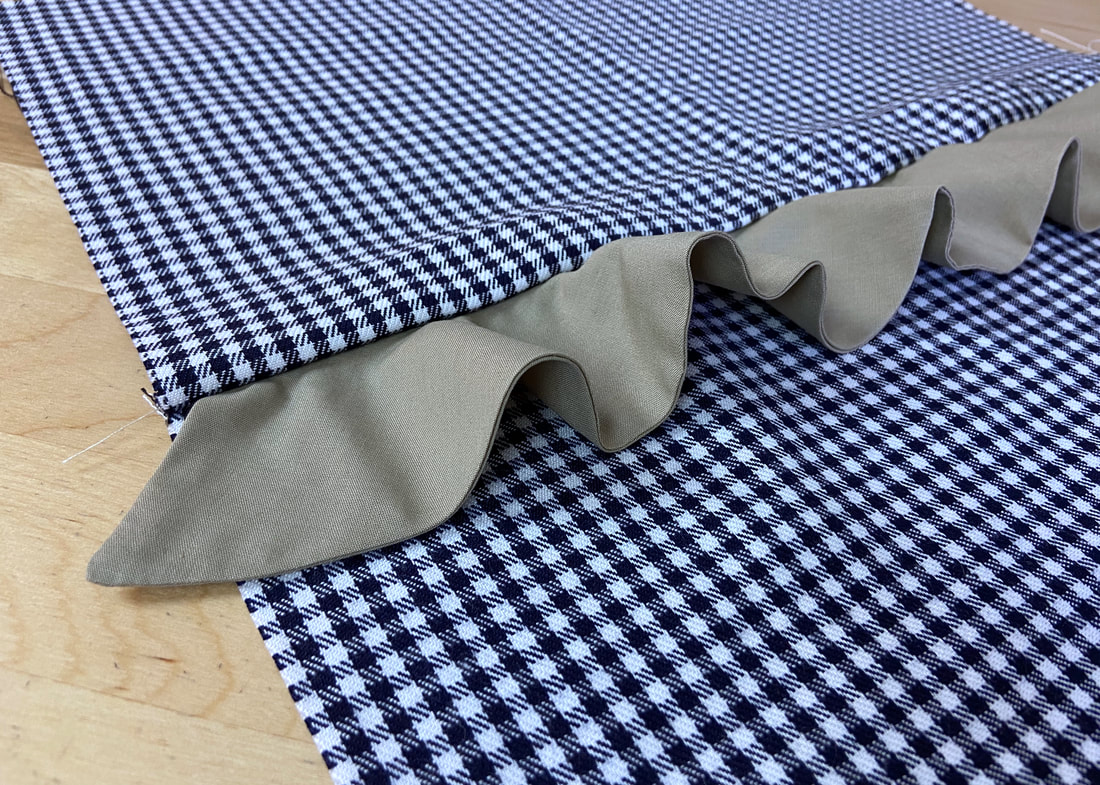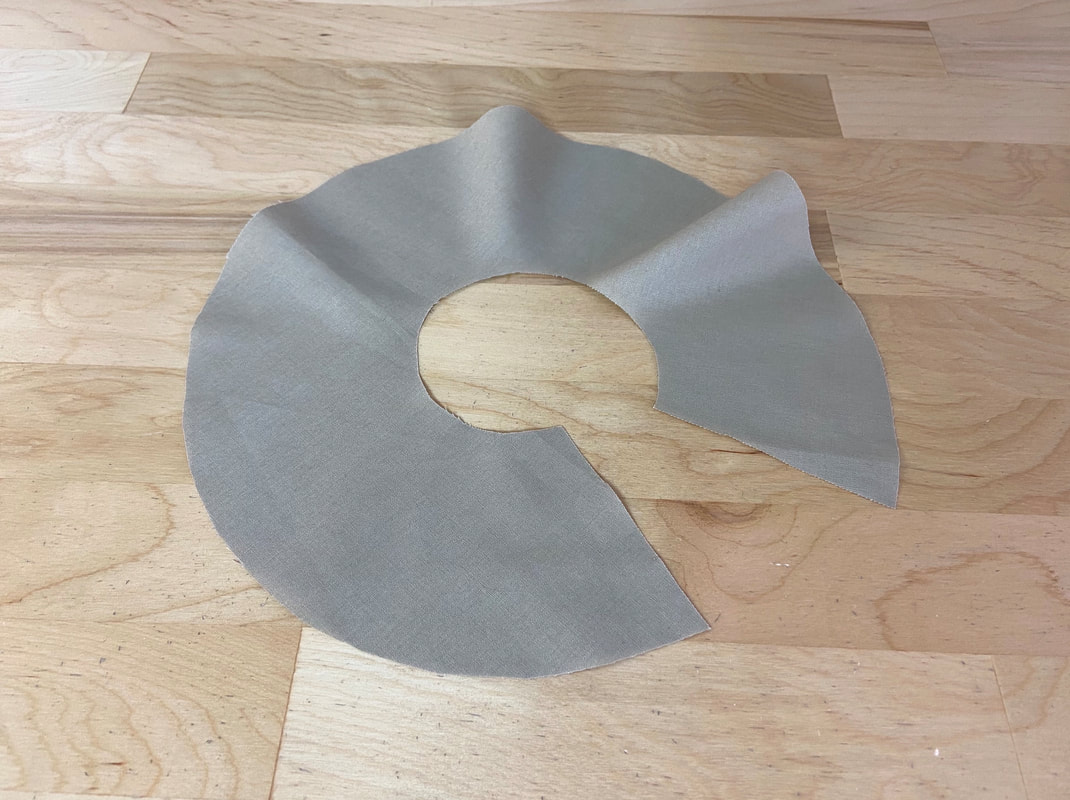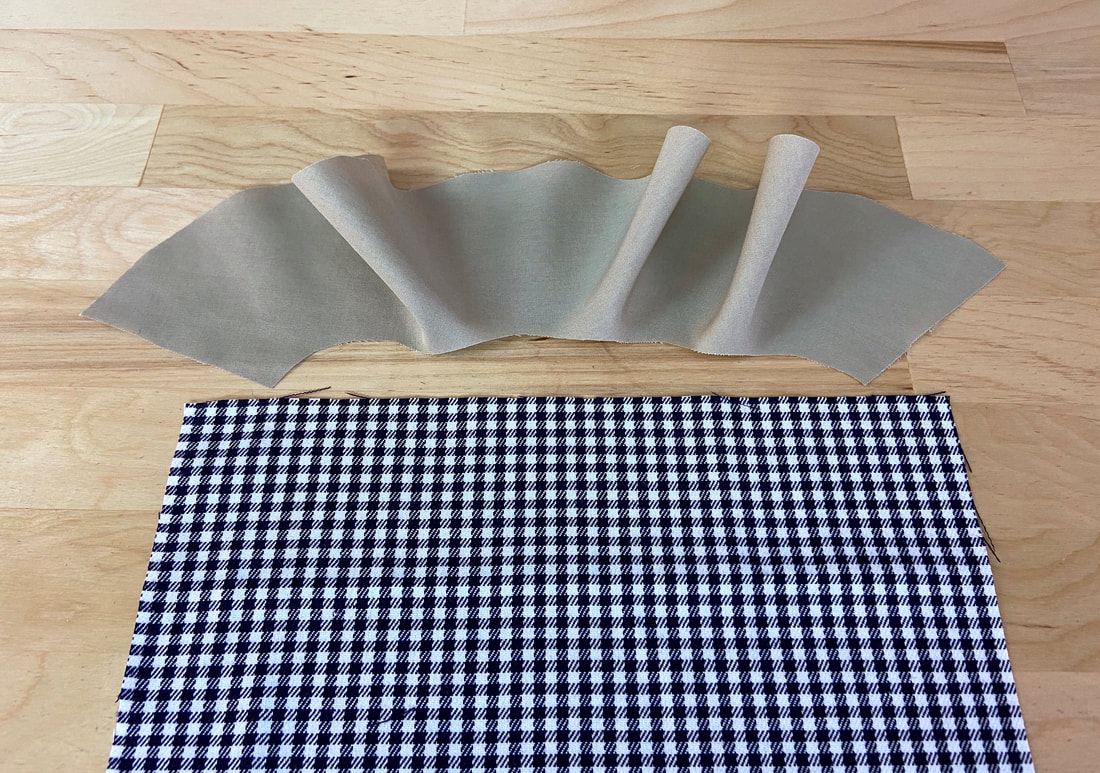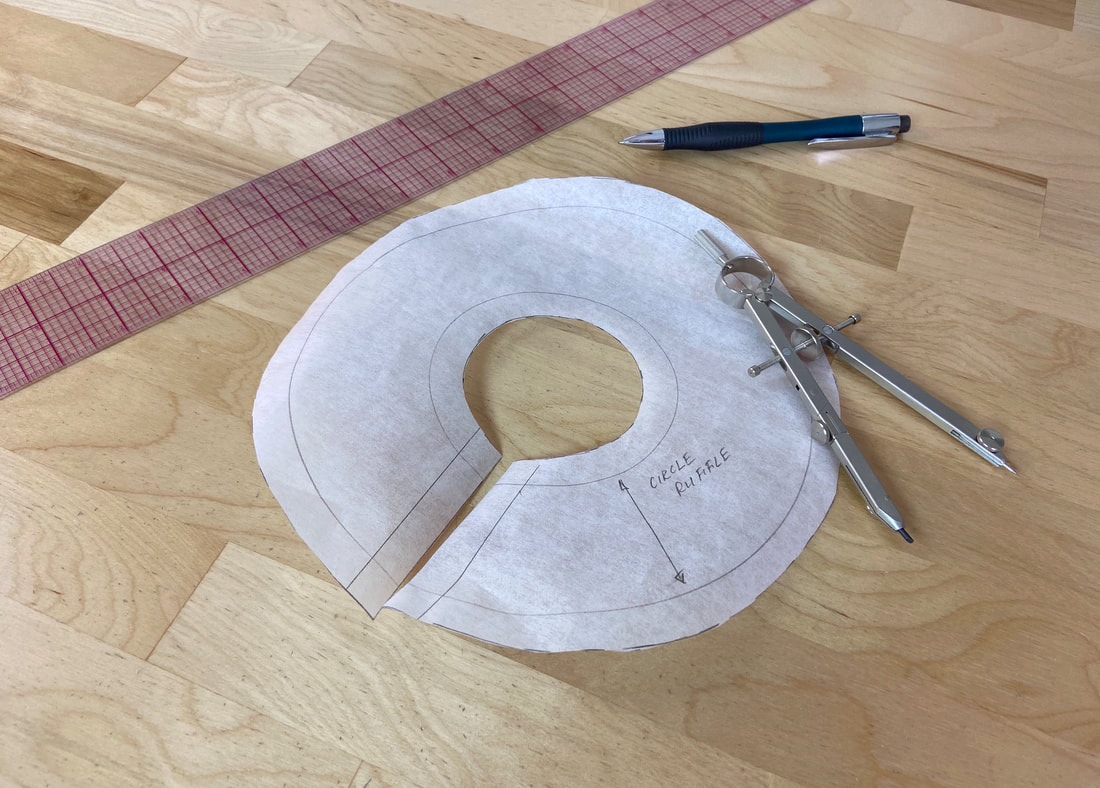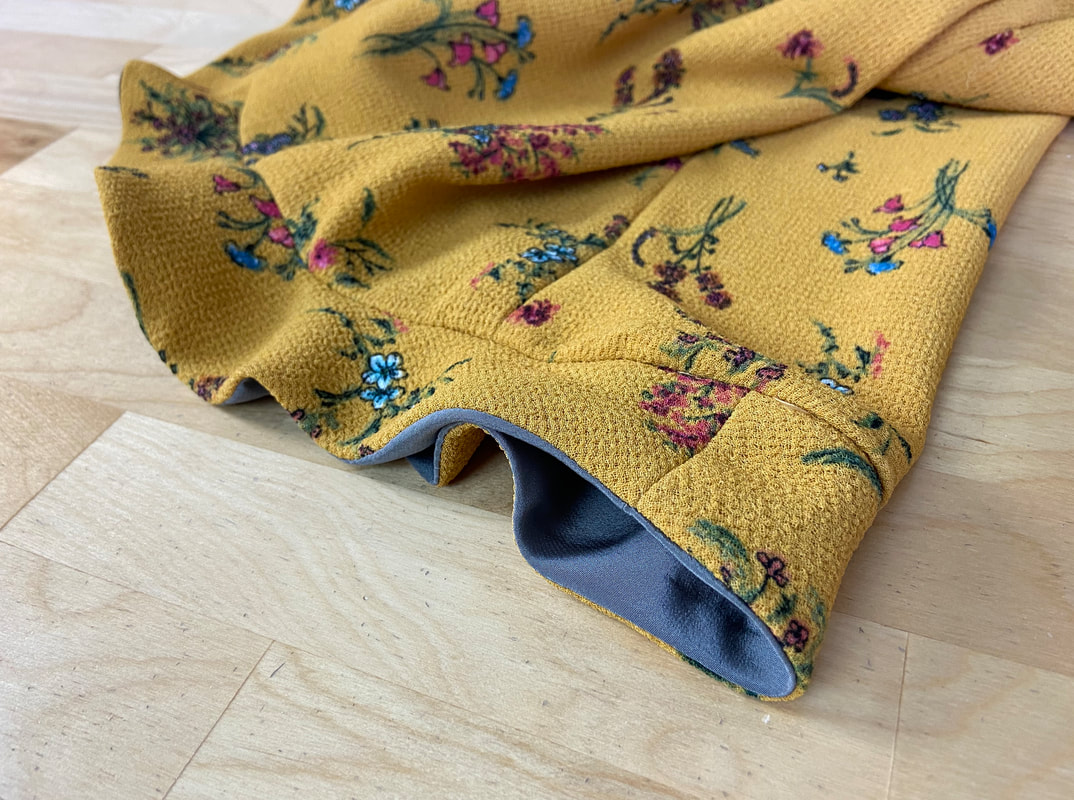Ruffles are perhaps some of the most widely-used design elements that serve both a decorative and functional purpose. It is this dual purpose that provides versatility and function to both casual and formal blouses, dresses, skirts and occasionally, heavier items like blazers and outerwear.
To understand how to use ruffles in dressmaking, it is important to first understand the difference between two main types of ruffles: gathered ruffles and circle ruffles. These two styles are patterned and constructed in completely different ways and thus, they vary in drape and end-use.
What Are Gathered Ruffles
Gathered ruffles are sewn from a straight fabric strip that is gathered along one edge, or within the body of the strip, to create fullness and flounce. Gathered ruffles create a pronounced, voluminous style which is often used on younger, more playful designs.
There are three gathered ruffle styles used in dressmaking:
A regular ruffle: This ruffle is gathered along one of its lengthwise edges and sewn either into a seam or along a fabric edge. The opposite edge of the gathered ruffle strip is free-hanging and clean-finished either with a rolled hem, lining, folded and topstitched, and in some cases, binding or a decorative trim.
A heading ruffle: This ruffle is gathered at a distance down from one of its lengthwise edges to create the illusion of a smaller ruffle opposite a larger one at the bottom. It is used just as much in dressmaking as it is with home projects like curtains and bedding.
A heading ruffle can be sewn along a garment’s edge or anywhere on the fabric’s surface. As opposed to the plain/regular gathered ruffle outlined above, the heading ruffle’s lengthwise edges are both free-hanging and clean finished individually using one of the methods noted above.
A centered ruffle: This ruffle style is similar to the heading ruffle described above, but the gathering in this case is placed exactly down the center of the ruffle in lengthwise direction. The two free hanging ruffle edges are clean-finished individually.
A centered gathered ruffle creates a fuller effect and can be used in dressmaking applications and various home projects. If used with high-draping fabric and cut at a longer width, the centered ruffle drapes down creating a double layer effect.
When it comes to gathered ruffles, a plain straight ruffle can sometimes be difficult to sew to the fabric’s surface. It is easiest to sew it into a seam or stitch it along the garment’s edge.
Heading and centered ruffles on the other hand, are easy to topstitch to the garment’s surface since the gathering is applied within the body of the fabric strip and not along its edge.
In terms of structure and design, gathered ruffles can be either single or double layered.
A single layer gathered ruffle is cut from a single fabric strip that is clean finished along its corresponding lengthwise edge(s) as needed.
A double layer ruffle is cut from a fabric strip that is double the final ruffle’s width. This fabric strip is then folded down the center lengthwise to naturally back and clean finish the ruffle’s bottom. The fold line corresponds to the gathered ruffle’s free-hanging edge. A double layer technique is often used with sheer and lightweight fabrics (chiffon, for example), or in instances where both right and wrong sides of the ruffle are equally visible on the finished garment.
Another question to consider with gathered ruffles is the length of the initial fabric strip in relation to the amount of flare it has when gathered.
For standard ruffle fullness, the fabric strip should be cut three about 3 times the length of the desired finished ruffle. If less fullness and flounce is desired, the fabric strip is usually cut at only twice the length of the final gathered ruffle.
What Are Circle Ruffles
As opposed to a gathered ruffle, a circle ruffle gains its volume and flounce from the way it is cut not how it is gathered. From a design standpoint, circle ruffles are softer and provide a more elegant drape.
A circle ruffle is cut in a circle shape, from an inner and outer circle. When the inner circle is forced straight, soft ruffling is created. This inner circle is the edge that is sewn to the garment, either within a seam or along an edge.
The inner curved edge is encouraged to lay straight with the help of wedge notching. The clipped notches release tension and increase flexibility.
The outer circle corresponds to the ruffle’s free-hanging edge. This outer edge is usually clean-finished with either a rolled hem, lining, binding or a decorative trim.
A circle ruffle pattern is easy to draft at home, allowing you to control the ruffle’s width and length.
Regardless of whether the ruffle is gathered or a circle style, one aspect remains the same: If a longer ruffle length is needed, multiple ruffle strips are sewn together to create a continuous piece. The connection seams utilize the same basic concepts as sewing regular seams: face sides together and following a designated seam allowance. The seam allowance finishes used on these connective seams are important to consider, especially with ruffles featuring an exposed or semi-exposed underside.

